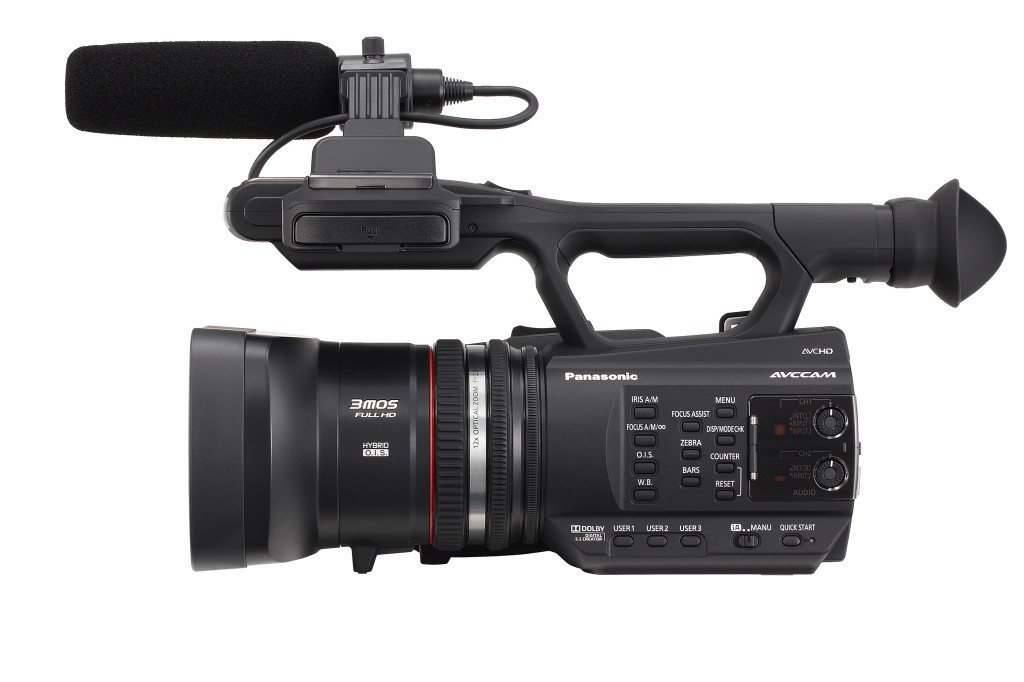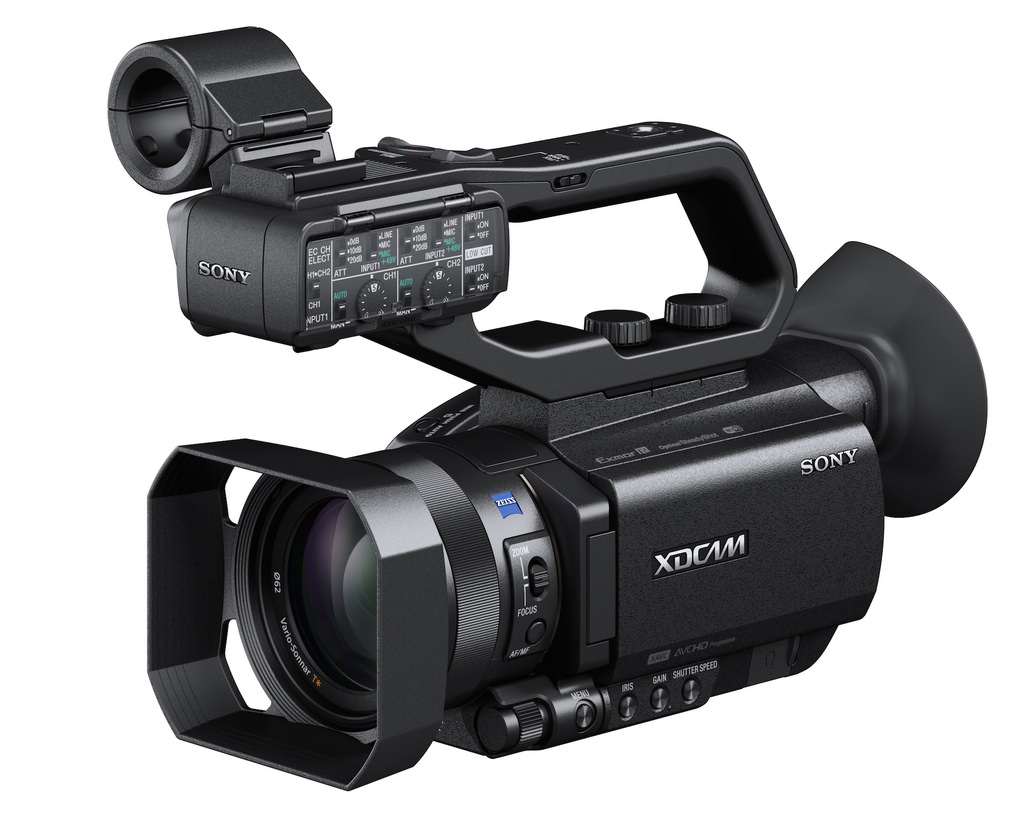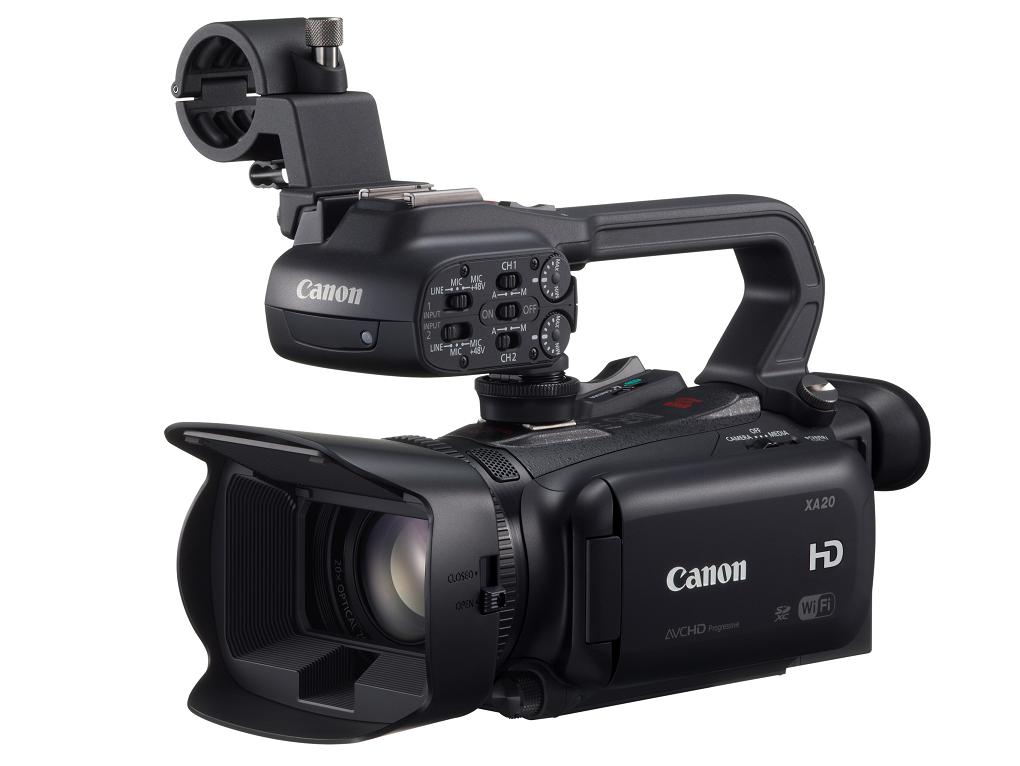Best entry-level pro camcorder
In August last year, we wrote a guide to the best low-cost camcorder that could reasonably be classed as “professional”, notwithstanding that these days professionals do in fact shoot their masterpieces on anything from a GoPro or iPhone upwards.
To a large extent that article has remained valid but now the time has come to do an update so here it is.
Our challengers last time around were the Panasonic AG-AC90 and Canon’s XF100. There was no mention of Canon’s XA20 since it hadn’t been released when we wrote the original text.
So who are the entrants this year? Well from Panasonic it’s still the AC90. Yes, there’s been a slight upgrade to the AG-AC90a but that extra letter really notes only a firmware update. Canon’s XA20 obviously must now be considered and whilst the XF100 is now rendered obsolete by its successor, the XF200, the latter’s price of £2,999 including VAT effectively rules it out of this contest. So, Canon’s entrant remains the XA20.
What then of Sony? They didn’t have much to offer in August 2013, their MC2000 and similar being mere consumer camcorders dressed up in fancy outfits. However – now they’ve got the PXW-X70 and it’s a bit of a killer especially given its price. That then is Sony’s best offering in this “entry level” category.
Let’s look at the specs: AG-AC90, XA20 and PXW-X70. All can shoot Full HD at 50p but as you go through the list, the bitrates crank up. The AC90 offers merely 28Mbps AVCHD; the XA20 has 35Mbps mp4; but the Sony shines with 50Mbps XAVC-S.
In truth all three formats are based on the H.264 codec so essentially the more bits the better and clearly the Sony has the edge.
Whereas all three offer dual-channel XLR audio inputs so there’s nothing to choose between them on that front, there certainly are differences in ergonomics.
(Actually, before we address that, it’s worth noting that the XLR handle on the Sony and Canon can be removed, giving you a “stealth” camcorder that appears to be a normal holiday-maker’s unit which can be useful in some filming situations. The Panasonic’s body is a one-piece fixed design).
That said, Panasonic’s AG-AC90 is clearly a winner in the handling field, with three proper control rings for focus, zoom and iris as well as plenty of tangible physical buttons to adjust settings such as white balance, gain and so on.

Both the Sony and Canon have only a single main lens ring and make do with a smaller dial on the lens side to adjust exposure. Both have a smattering of programmable buttons on the body but the Sony just edges the Canon for second place due to having separate dedicated buttons for iris, gain and shutter.
They all have a decent enough zoom rocker on the body unlike many consumer camcorders and all are small enough to be comfortable to hold though the Canon and Sony edge the Panasonic in compactness. None of them boast an LCD which you can see from the right hand side of the camcorder, alas. It’s a feature we’ve only ever seen in Canon’s XF300 and it’s so, so useful when shooting interviews solo (as many videographers tend to be these days) :-(
All three shoot onto SDXC or SDHC cards but the Panasonic and Sony trounce the Canon in the paranoia stakes by offering to save your footage onto two cards simultaneously – a feature that wedding and event videographers will breathe a huge sigh. Yes, the Canon does sort of offer this too but it’s inactive when you select the highest bitrate, highest framerate (50p) mode which is annoying.
The Sony has an extra neat trick up its sleeve which permits you to assign the two “record” buttons (handle and back of camcorder) to store footage onto separate cards.

All three feature touchscreens for some of their operations and there’s nothing remarkable to say about any of them; whether you like the way the menus are structured will be a matter of personal preference.
Let’s talk lenses. The Panny has a 12x zoom going from a not-very-wide 29.8mm-383.7mm in 35mm equivalence terms. The Canon offers a super 20x optical zoom from 26.8-576mm (equiv) although you lose 2mm at the wide end when you invoke one of its stabilisation modes as the extra pixels are used to hold the image steady.
The Sony’s got a 12x optical zoom, ranging from 29-348mm (equiv) but the company makes a big boast about its “Clear Image Zoom” which it says extends the range to 24x with minimal picture degradation. It’s achieved through the sheer number of pixels (14 million or so effective in video mode) on the sensor so it’s not really a digital zoom in the dreadful interpolated sense of these things. Nonetheless, we did notice a decrease in sharpness using this technology on the X70’s consumer sibling the CX900 though so check this for yourself before buying.
Specification junkies will no doubt have registered that the AC90 has only tiny little image sensors, a mere 1/4″ across. Yet it has three of them and by all accounts is not a bad performer in low light situations all things considered. The Canon has a single 1/3 (OK, 1/2.84″) sensor and does a reasonable turn in dim conditions especially as the lens rates to f1.8. Be prepared for your jaw to drop at the Sony’s colossus of a sensor though, 1″ across but “only” f2.8 and in our comparison tests, only a bit better than the Canon.

Stabilisation for handheld shooting on all three camcorders can be excellent depending on the mode you select; it’s a shame the Sony doesn’t have the legendarily excellent “BOSS” system which floats the whole lens assembly but given the sensor size perhaps this is no surprise.
There’s an ace up the Sony’s sleeve when it comes to being labelled “professional” as it boasts, as standard, an SDI out connector enabling secure locking of BNC connectors to separate recording devices, vision mixers or other bits of kit. You can get this on the Canon by buying the XA25 version (over the XA20) but at a substantial price premium (£1550 inc VAT for XA20, £1900 for the XA25). It’s not an option on the AC90.
The Sony also takes the prize for “pro” status in terms of the customisation you can do to its picture profiles. The gamma curve, knee point, colour phase, depth and correction can all be set and stored – this is a mile ahead of any tweaking possible in the other two.
Let’s deduct a point from the XA20 here as well for inexplicably not featuring one of the most useful of exposure tools, a histogram. The other two do and very helpful it is as well. All three have zebra bars and peaking at least to help with getting everything just so. Bonus marks to the Sony for having real Neutral Density filters too, adjustable via a tiny switch on the back of the camcorder.
OK, enough. We could carry on for pages here giving the individual specs for each unit and not getting to the point: which of these is the best, entry-level, professional camcorder?
The clear winner is: the Sony. We admit we aren’t fans of its consumer equivalent model the HDR-CX900. But the PXW-X70 is sufficiently revised and improved both physically and in firmware that it’s a much, much better machine. And at the price of £1,890 including VAT – look at that price! – it’s mind boggling. You can buy it via our Amazon link here: http://amzn.to/1zy7qxQ for which we get a tiny commission; thank you!
We do have a soft spot for Canon’s XA20 despite its many peculiarities and failings. As a grab-n-go camcorder with some manual ability, it’s a cool little unit. But it’s outclassed and outperformed by the Sony especially with the price of the X70 (did we mention the price enough yet?).
Likewise the AC90 is a nice enough bit of kit. Getting a little old now and always did feel rather plasticky to hold but if you must have three real control rings on the lens then it’s the only one that delivers. If you want that one, this Amazon affiliate link delivers the goods: http://amzn.to/1tgI9Qn
Nonetheless we stand by our 2014 result and hand the crown to Sony’s PXW-X70.
The Panasonic AG AC90 has horrible low light capabilities. I compared it to the XA20 and a little Sony NX30. I intended buying the Sony, threw in the Panasonic because it looked pro, and ended up buying the Canon because of it all-round brilliance.
To be fair, the Panny does only have 1/4″ chips which are teensy tiny little things. But I’m a little surprised because we’ve seen more than one report of it being quite decent in low light (all things considered).
This article about the Canon XA-20 not able to record simultaneously into two SD cards is incorrect. I own both the XA-25 and the XA-20.
The article does not say the XA camcorders cannot dual record. It says they cannot dual record when using the highest bitrate shooting modes (35Mbps mp4 or 28Mbps AVCHD) and this is entirely correct.